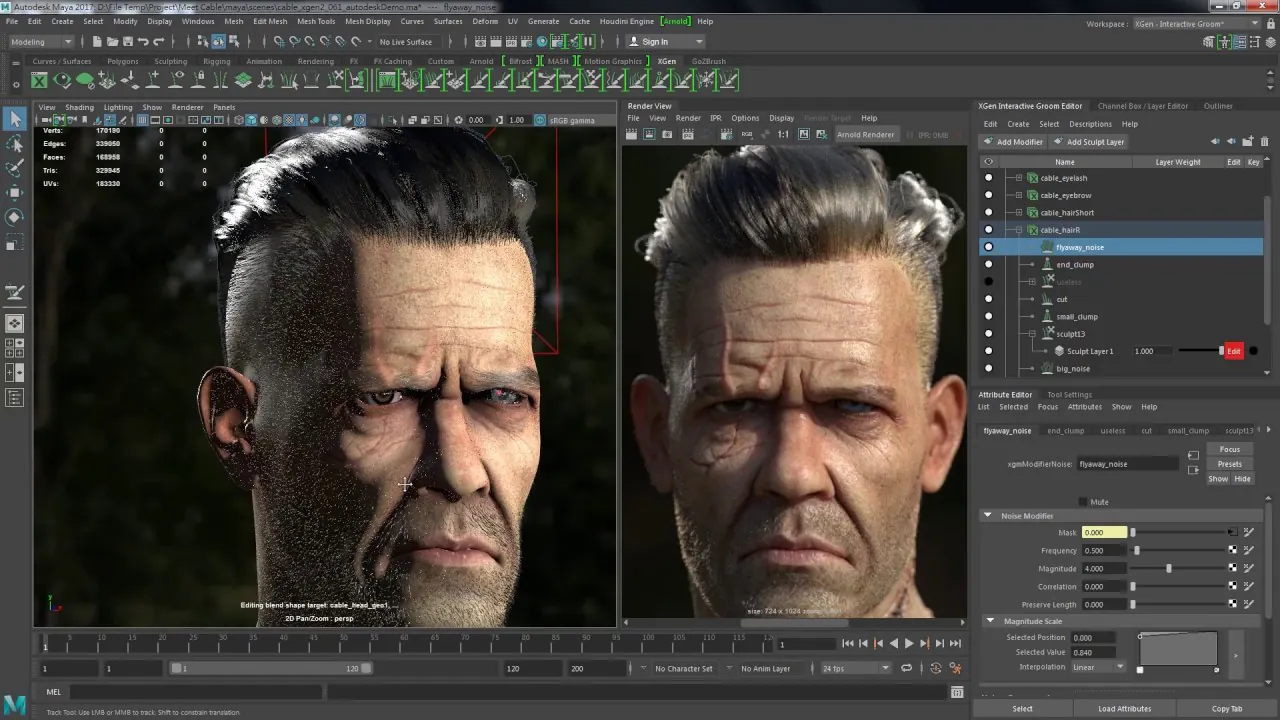
How to create a 3D Game Character in Autodesk Maya
A 3D game character is a digital representation of a character in a video game, created using 3D computer graphics. It is a model that has been designed and animated to move and interact within a virtual environment in a three-dimensional space. 3D game characters can range from human-like figures to fantastical creatures and can be controlled by the player or programmed to behave in a certain way within the game’s rules.
There are many software programs used in the creation of 3D game characters, some of the most popular ones are:
Autodesk Maya – a professional 3D animation software used by many games’ developers
Blender – a free and open-source 3D graphics software
ZBrush – a digital sculpting tool for creating high-resolution 3D models
3ds Max – a professional 3D modeling software from Autodesk
Substance Painter – a texturing software for 3D assets
Houdini – a 3D animation and visual effects software
Unity – a game engine that has its own integrated tools for creating 3D characters and environments
The choice of software depends on the needs and preferences of the development team and the specific requirements of the project.
Autodesk Maya
Here is a step-by-step guide to create a 3D game character in Autodesk Maya:
Conceptualize the character: Start by sketching or brainstorming ideas for your character’s appearance, personality, and backstory. Decide on the overall look, outfit, and any unique features that the character should have.
Model the character: Begin by creating a rough 3D model using basic shapes and forms in Maya. Refine the model by adding details and sculpting the shapes to match your concept art.
Rig the character: Set up a skeleton and rigging system to control the character’s movements. This involves creating bones and joints, and then linking them to the 3D model.
Animate the character: Bring the character to life by creating keyframe animations that control its movements and actions. Test the animations to ensure they are smooth and believable.
Texture the character: Add color and detail to the character’s surface by painting textures directly onto its 3D model. This process can be done within Maya or in a separate texturing software.
Test and refine: Test the character in a game engine or simulation to see how it behaves and performs in a real-world scenario. Make any necessary adjustments and refinements to the character’s model, rigging, and animations.
Export the character: Once the character is complete, export it in a format that can be used in the game engine or simulation you are using.
Note: This is a basic guide and the specific process may vary based on the complexity of the character and the requirements of the project.
Applications of Autodesk Maya
Autodesk Maya is a powerful 3D animation, modeling, simulation, and rendering software that is widely used in various industries, including:
Film and Animation: Maya is used in the production of animated movies and special effects for live-action films. It is popular in the industry for its robust animation tools and visual effects capabilities.
Gaming: Maya is used by many game developers for creating 3D characters, environments, and animations for video games.
Architecture and Engineering: Maya can be used for creating 3D models and visualizations of buildings, products, and structures.
Product Design: Maya is used by industrial designers for creating 3D prototypes and visualizations of consumer products.
Broadcast and Advertising: Maya is used for creating 3D graphics and animations for television commercials, broadcast graphics, and other advertising materials.
Education: Maya is widely used in universities and institutions for teaching 3D computer graphics and animation.
These are just a few examples of the many uses of Autodesk Maya. It is a versatile tool that can be used for a wide range of 3D content creation projects.
Autodesk Maya for Game Developers
Autodesk Maya can help game developers in several ways:
3D modeling and animation: Maya provides a comprehensive set of tools for creating 3D models, rigging, and animating characters, environments, and objects for games. The software also has powerful sculpting, texturing, and shading tools to add detail and realism to game assets.
Character rigging: Maya’s rigging tools allow game developers to set up a skeleton and control system for characters, making it easier to create realistic animations. The software’s flexible rigging system allows for complex rigging setups, making it easier to create believable characters with realistic movements.
Environment creation: Maya can be used to create highly detailed and complex game environments, including terrain, landscapes, and architectural structures. It also has powerful lighting and shading tools to add depth and realism to the environment.
Visual effects: Maya’s visual effects tools allow game developers to create a wide range of special effects for games, including explosions, fire, smoke, and more. The software also has robust particle simulation tools that make it easier to create complex effects.
Collaboration: Maya’s support for file sharing and collaboration makes it easier for game development teams to work together on projects. The software also integrates with other tools commonly used in the game development process, such as game engines, to streamline the workflow.
Conclusion
Overall, Autodesk Maya is a powerful tool that can help game developers create high-quality, detailed 3D assets and animations for their games. The software’s wide range of tools and capabilities can help streamline the game development process, making it easier to bring game ideas to life.



